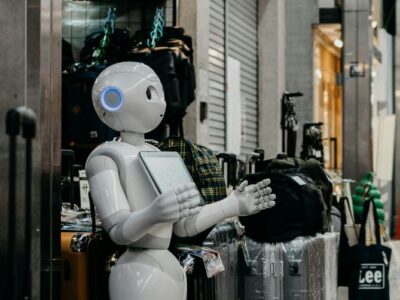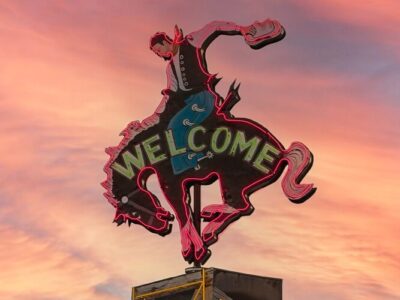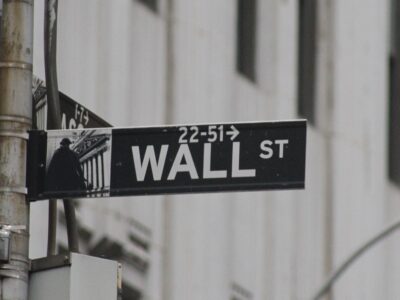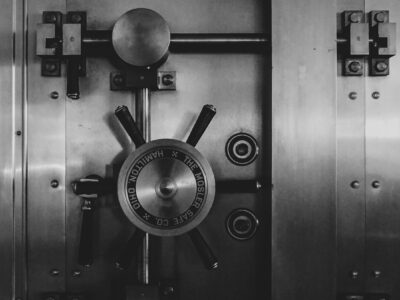Commentary – 2020 3rd Quarter
7/27/2020

We have come full circle. Three months ago, this letter was about the fastest stock market collapse on record. Today, we sit here baffled by the fastest recovery on record. It is oddly reassuring to be reminded, no matter how much market history is studied, that nobody has seen it all. But just how different is it this time and why the huge upswing while the economy is still sputtering? Policy responses have been swift and certainly a major contributor to the turnaround. We’ll elaborate on the Paycheck Protection Program and what it means for both employers and employees. Lastly, in our daily musings, we always come across interesting perspectives which step outside of financial topics. Sometimes, historical economic research boils down to more art than science.
Don’t Fight the Fed
In a now-famous speech in December 1996 by Alan Greenspan, the Federal Reserve chairman posited, “How do we know when irrational exuberance has unduly escalated asset values?” In layman’s terms, Mr. Greenspan was commenting on how overly optimistic investors can push up stock prices to an amount much higher than they are worth, leading to an inevitable collapse—a bubble.
There has been chatter that irrational exuberance is back in fashion (emphasis on the irrational). Sure, a 34% decline in the S&P 500 represents a buying opportunity, but the market came roaring back and is only down 3% year-to-date[1]. With unemployment spiking close to 15%, GDP for Q1 shrinking by 5%, and economic activity shut down, this represents an extreme disconnect[2].
In research done after the bursting of the internet-stock bubble in the 1990s, Malcolm Baker, a finance professor at Harvard Business School, and Jeffrey Wurgler, a finance professor at New York University, performed what is widely regarded to be the most extensive study in quantifying investor optimism. Naturally, we were curious how their work relates to today’s market. Here are the CliffsNotes for their findings on when irrational exuberance exists[3] –
- The number of initial public offerings (companies issuing stock for the first time) and their average first-day return. The higher these numbers, the more likely that investor optimism is running rampant. In 1999, there were 476 IPOs with an average first-day return of 71%. This year there have been 44 IPOs so far with an average first-day return of 34%.
- Are companies using equity or debt to raise capital? The theory is that companies turn to equity markets in periods of irrational exuberance. Today, the equity proportion is half of what it was in 1999.
- The value of dividend-paying stocks versus non-dividend-paying stocks. Dividend payers tend to be older, more established companies. When there is speculative excess, investors favor highflying growth stocks which typically do not pay dividends. At the top of the internet-stock bubble, the price-to-book ratio of the average non-payer was more than double that of the average dividend-paying company. Today, according to FactSet data, it is nearly the reverse: dividend-payers sport an average price-to-book ratio that is 44% higher than for the typical non-payer.
While it appears that excessive optimism does not exist today, the natural progression is to wonder if we are headed in that direction. Part of the ongoing controversy in central banking is that the Federal Reserve not only allows bubbles to exist, but also plays a major role in creating them. This was more evident than ever in a lengthy answer that Jerome Powell gave Bloomberg News when asked whether he was concerned about a stock market bubble[4] –
“Our principal focus is on the state of the economy, the labor market, and inflation. Now inflation of course is low, and we think it’s very likely to remain low for some time below our target. Really, it’s about getting the labor market back in shape. That’s been our major focus. If we were to hold back because we think asset prices are too high, if we just decided that that’s the case, what would happen to those people? What would happen to the people that we’re legally supposed to be serving? We’re supposed to be pursuing maximum employment and stable prices, and that’s what we’re pursuing.”
Translation: we are going to keep pumping money into the economy no matter what. This isn’t necessarily a new playbook, as it is usual for the Fed to make liquidity available in difficult times for the economy (although they have utilized some new techniques that are too complicated to explain here). Mr. Powell, however, appears exponentially more trigger-happy than any of his predecessors. The speed and magnitude with which M2 (U.S. money supply) grew over the past three months is unprecedented.
The Fed has been harshly criticized for the way it created liquidity during the Great Recession. For context, approximately 250 days after the start of the bear market in 2008, the money supply shot up by 30-35% and remained in that range for the better part of the following year. This time around it took less than 30 days for the excess liquidity measure to be just shy of 45%[5].
Historically, every time liquidity is artificially expanded, the stock market follows in almost perfect correlation. So it is, in fact, perfectly rational to be exuberant until the money creation faucet is turned off. The tide rises all ships.
Our concern is what this means for long-term investing. When central bankers are willing to backstop the economy with unlimited liquidity, the nature of risk is fundamentally altered. Consider this scenario—you were on a sabbatical for the first 6 months of 2020; completely shut off from the world. Upon your return, you checked your year-to-date investment performance. It would offer absolutely no clues to the fact that COVID-19 shut down a large portion of the global economy. How does that make any sense?
In the interest of not burying the lead, it makes absolutely no sense. Investments 101 teaches us that risk and reward are inherently intertwined. In order to enjoy greater returns, you must take more risk. So, when central banks make it less risky to own stocks (i.e. the economy shuts down and your portfolio is back to where it was two months later), we can only assume that means long-term returns will not be as high as they were historically.
This is not necessarily bad. Americans rely on their investments to advance financial positions over time, purchase real estate and fund other economic growth activities, and ultimately provide retirement income. Making this a less risky proposition seems attractive, even if it means sacrificing some returns.
Policymakers need to consider when this becomes too much of a good thing. There is no free lunch—rampant money creation can lead to uncontrollable inflation. The Fed is also the de facto central bank of the world. When its policy targets its own economy without considering the spillover effect, the Fed is “very likely to overdraft the credit of the dollar and the U.S.” (quoted directly from senior Chinese banking officials at an economic forum last month).
This could spell trouble for the dollar’s status as primary global reserve currency. The U.S. has drawn freely on the rest of the world to support an over-extended standard of living for the past 60 years. That may no longer be the case if central bankers keep playing monopoly.
PPP: From Employers to Employees
There has been a ton of confusion surrounding the Paycheck Protection Program. There was an initial surge of applications when the program first started, as small business owners hoped it would help curtail the uncertainty brought on by COVID-19. The initial $349 billion was exhausted within 13 days. Another $300 billion was pledged and the deadline for applications is now August 8th.
We’ve heard countless questions from employers looking for guidance on their obligations under the program. Some industries are being publicly shamed for accepting funds. Recipients have given the funds back to not deal with the headache of compliance. Employees are even asking questions; wondering why their paychecks look different, especially in industries with highly variable pay.
Last month, there was finally some clear guidance released. The PPP Flex Act was signed on June 3rd and simplified how small business owners should utilize the funds[6]. The bottom line—Congress is trying to make it easier to qualify for forgiveness. Here are some of the main points to be aware of in utilizing the PPP funds –
- The business has 24 weeks (instead of 8 weeks) to spend the funds and 60% (reduced from 75%) of the funds must be used on payroll expenses. This is as of the date the loan is secured.
- Loan payments have been deferred until the amount of forgiveness is determined.
- Businesses who applied and subsequently paid the funds back under the old rules are not eligible to re-apply under the new rules.
- Self-employed individuals, independent contractors, and sole proprietors are all eligible for the PPP, even if they don’t receive a paycheck. For those businesses, the loan amount is tied to the net profit for the business in 2019, even if they haven’t filed their tax return.
- Furloughed employees must be re-hired by the end of the year (extended from June 30th) and businesses who can sufficiently document that they are unable to re-hire those employees may still qualify for forgiveness[7].
If you are not a business owner, but an employee of a small business who obtained a PPP loan, there are some key points to understand about how this program affects you[8].
- Employee compensation may not be reduced by more than 25% for the business to qualify for loan forgiveness.
- You are not eligible to receive unemployment benefits or the additional $600 weekly benefit from the CARES Act if your employer is paying you with PPP funds, even if you are not working.
- Do not opt to stay on unemployment—this means that your job is not protected, and your employer can still qualify for loan forgiveness.
Employees should also be familiar with the acronym FFCRA, which stands for the Families First Coronavirus Response Act. If schools and summer care providers in your area are closed, you may be eligible for paid leave. This will keep your employment protected and is a qualified expense for your employer under the PPP program.
A Sign of the Times
It is difficult not to think in circles about COVID-19. There is a welter of research out there, very little of it yet subject to intensive peer review. Whatever your initial bias, someone somewhere has research to confirm it.
We also have very little, if any, comparative experience—it’s not every day that a virus shuts down the global economy. The 1918 Spanish influenza pandemic is likely the closest thing to the 2020 coronavirus, but a century of separation means that they diverge in some major ways.
For one, medical science was simply less advanced. Some 500 million people, or one-third of the world’s population, became infected with Spanish flu and an estimated 50 million people died worldwide[9]. Non-pharmaceutical measures like social distancing and business closures were also put in place in 1918, but communication moved much slower 100 years ago.
Today, we have constant new information at our fingertips. Changes to public perception and policy response can be made almost instantly (for better or worse). This was not the case during the Spanish flu. So, journalists and politicians turned to the next best thing—artwork.
A cursory Google search of “Spanish Flu Artwork” returns thousands of images and articles on how the pandemic was depicted. A passage from Art in America encapsulates the times[10] –
“On October 6, 1918, a newspaper spread appeared in cities across the United States that conflated science, painting, nationalism, and war. The layout mingled scientific diagrams of the human respiratory system with a painting of a finely dressed woman collapsed on the floor of a luxurious interior, bathed in the oblique light of a large, multi-paned window. A lamp rolls across the floor as if it has just been dropped, and a man in the background backs away from the scene, steadying himself against a large tapestry. The woman, beautiful and unmarred, looks as though she has simply fainted rather than fallen victim to contagion. This image of a swooning maiden sanitizes the grotesque reality of death by plague, which was rapid, violent, and anything but visually pleasing.”
This depiction was coupled with an article aimed at containing and neutralizing public fear. A century ago, in the face of the far deadlier influenza pandemic, the country refused to go anywhere near as far or as fast in its public-health response. In place of a shutdown, New York launched a public education campaign, flooding the city with circulars, newspaper spreads (such as this one), magazine articles, posters, and brochures. The onus was placed on citizens to halt the spread of the disease. Some 10,000 placards were deployed in public spaces and throughout the transportation system.
The outbreak of a virulent disease changes the way people interact with their environment. It also exacerbates the social milieu. This article was published one month before the conclusion of World War I—the United States had solidified its status as the greatest power in the world and Americans were by and large unified in their optimism.
Today feels different. Within days of COVID-19 being declared a pandemic by the World Health Organization, citywide shutdowns, business closures, and mask ordinances went into effect. Not to be outdone, world leaders then engaged in what can only be described as a game of moral one-upmanship—sensible policy being replaced with high-minded political rhetoric.
Unfortunately, there are no winners in this game. Instead of artistic renderings intended to reduce hysteria, we have Twitter rants and “gotcha” journalism to fuel divisiveness. Five months after COVID-19 started, the only thing we can seem to agree on is that we disagree.
It is (and was) a sign of the times.
We hope you enjoyed our comments. If you have any questions, please do not hesitate to contact us. We welcome the opportunity to discuss our thoughts in greater detail. Thank you for your continued confidence in Planning Capital.
[1] Ben Winck, “The S&P 500 Briefly Erased It’s 2020 Losses”, Business Insider, June 11, 2020
[2] “US Unemployment Hits Record High/US GDP Contracts More than Expected”, Trading Economics, May 28, 2020
[3] Mark Hulbert, “Are Stock Investors Irrationally Exuberant Again?”, The Wall Street Journal, July 5, 2020
[4] John Authers, “Party Like It’s 1999”, Bloomberg Points of Return, June 11, 2020
[5] John Authers, “Crash Lesson No. 1? Don’t Ignore the Fed’s Gusher”, Bloomberg Points of Return, June 9, 2020
[6] Ruth Simon, “PPP Loans: What You Need to Know”, The Wall Street Journal, July 6, 2020
[7] Gabriel Herman, “Easing Path to Loan Forgiveness”, Fox Rothschild Publications, June 4, 2020
[8] Julie Peck, “Your Employer Just Received a PPP Loan”, Business Insider, May 5, 2020
[9] Quentin Fottrell, “Here’s One Difference Between COVID-19 and Spanish Flu”, MarketWatch, July 14, 2020
[10] Aubrey Knox, “The Spanish Influenza Transformed Everyday Life”, Art in America, May 12, 2020
[1] Ben Winck, “The S&P 500 Briefly Erased It’s 2020 Losses”, Business Insider, June 11, 2020
[1] “US Unemployment Hits Record High/US GDP Contracts More than Expected”, Trading Economics, May 28, 2020
[1] Mark Hulbert, “Are Stock Investors Irrationally Exuberant Again?”, The Wall Street Journal, July 5, 2020
[1] John Authers, “Party Like It’s 1999”, Bloomberg Points of Return, June 11, 2020
[1] John Authers, “Crash Lesson No. 1? Don’t Ignore the Fed’s Gusher”, Bloomberg Points of Return, June 9, 2020
[1] Ruth Simon, “PPP Loans: What You Need to Know”, The Wall Street Journal, July 6, 2020
[1] Gabriel Herman, “Easing Path to Loan Forgiveness”, Fox Rothschild Publications, June 4, 2020
[1] Julie Peck, “Your Employer Just Received a PPP Loan”, Business Insider, May 5, 2020
[1] Quentin Fottrell, “Here’s One Difference Between COVID-19 and Spanish Flu”, MarketWatch, July 14, 2020
[1] Aubrey Knox, “The Spanish Influenza Transformed Everyday Life”, Art in America, May 12, 2020






